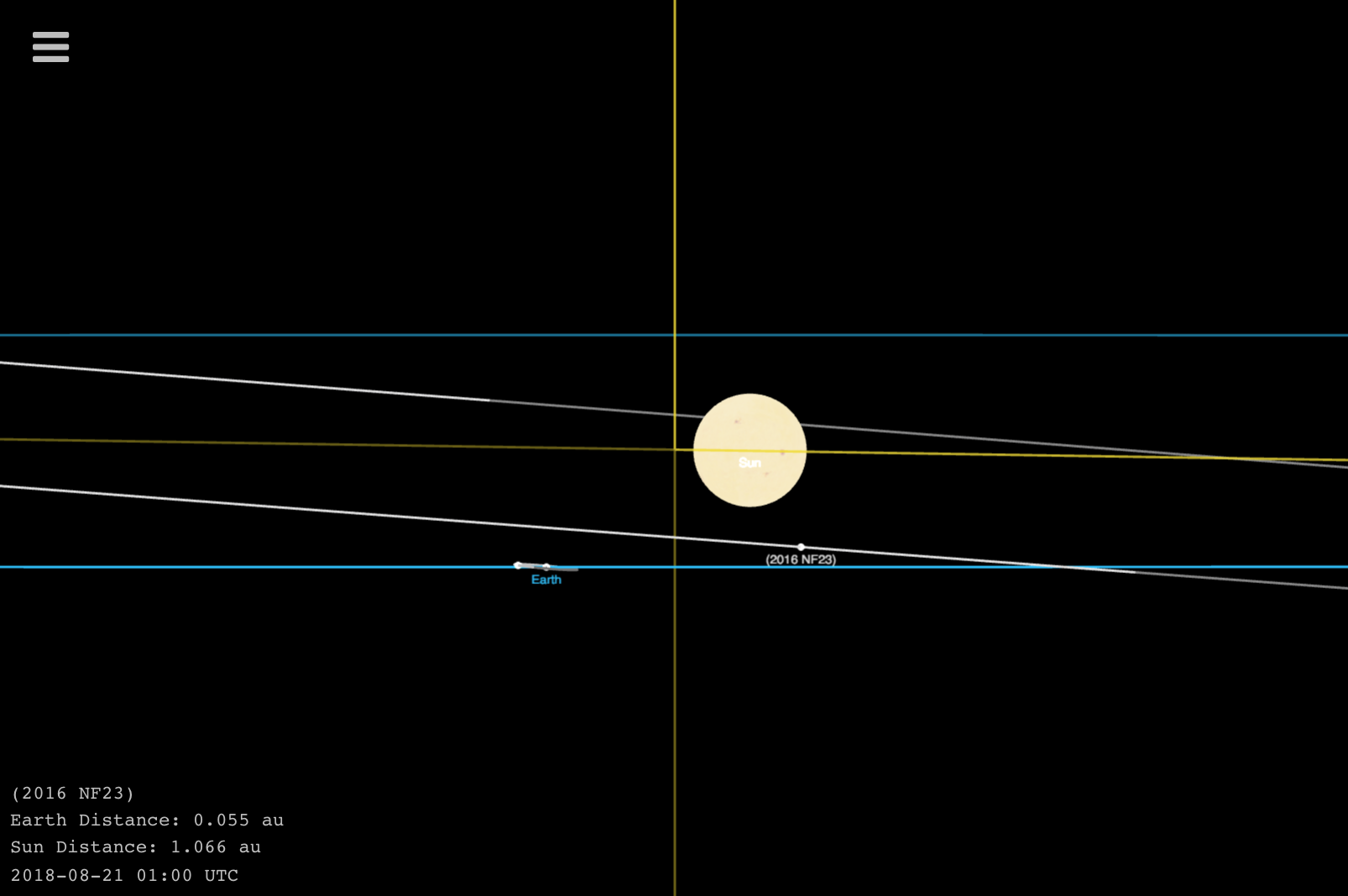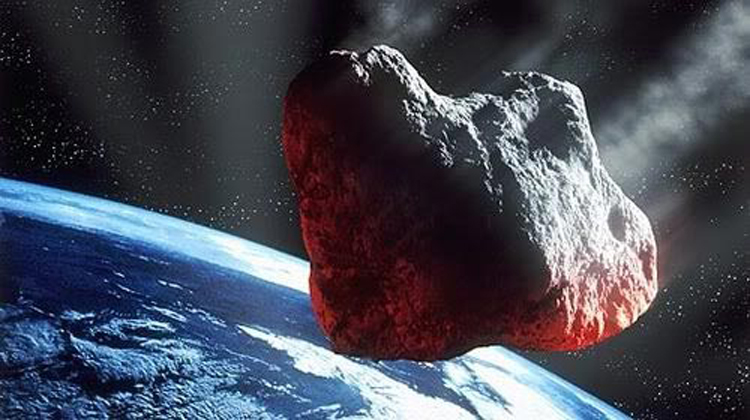This Asteroid Poses No Risk — Again, No Risk — to Us Earthlings
It is true that asteroid 2016 NF23 exists. It is true that NASA considers this asteroid a near-Earth object (NEO). It is true that, because of its size and distance from the Earth, it's been labeled a potentially hazardous asteroid. And it is also true that 2016 NF23 poses no threat to our home planet.
Again, asteroid 2016 NF23 poses absolutely no threat to us on this pass.

If there is any remaining confusion, Lindley Johnson, planetary defense officer at NASA Headquarters in Washington, had this to say to Space.com in an email: "There is absolutely nothing for concern by this pass of 2016 NF23. This object is merely designated a Potentially Hazardous Asteroid (PHA) because its orbit over time brings it within 5 million miles (8 million kilometers) of Earth's orbit, but there is nothing hazardous to Earth or even unique about this pass of the asteroid." [NASA Maps Dangerous Asteroids That May Threaten Earth (Photos)]
Some have claimed that the rocky object will "skim past" Earth, but the asteroid is actually very far from us. 2016 NF23 will pass us by on Tuesday (Aug. 28) at 11:38 p.m. ET (3:38 UTC on Aug. 29)at about 13.2 lunar distances (LD). One LD is the distance between Earth and the moon, so 13.2 LD would be more than 3 million miles (5 million km) away — which places 2016 NF23 at a considerable distance from our planet.

NASA estimates that this asteroid is likely between 229 feet and 524 feet (70 and 160 meters) in diameter. So, if it were at the larger end of this measurement, it could be larger than the Great Pyramid of Giza. But this isn't exceptionally large by asteroid standards. Ceres, for instance, is about 590 miles (950 km) across.
A massive, rocky asteroid traveling at around 20,000 mph (32,400 km/h) might seem frightening at first glance. But rocky objects fly by Earth fairly regularly, and often much closer than 2016 NF23. In 2018, there are many objects flying closer than 1 LD to Earth. As of Aug. 23, NASA was aware of 1,912 potentially hazardous asteroids.
In fact, on Wednesday (Aug. 29), NEO 1998 SD9 will pass by Earth — and it will come much closer than 2016 NF23. At about 3:27 a.m. ET, 1998 SD9 will pass by our planet at 4.2 LD at over 23,000 mph (10.7 km/s). This object, which NASA estimates to be between 126 feet and 282 feet (38 and 86 m) in diameter, will come closer than any known potentially hazardous asteroid in the next two months. But even at that close (relatively speaking) distance, we remain perfectly safe from an impact here on Earth.
Sign up for the Live Science daily newsletter now
Get the world’s most fascinating discoveries delivered straight to your inbox.
There are a number of NEOs, including many that will come much closer to Earth than 2016 NF23. But, as Johnson said: "None of these passes will have any effect on Earth."
NEOs can pose a threat to us here on Earth, but remember to do your research before believing rumors about "dangerous" asteroids.
Email Chelsea Gohd at cgohd@space.com or follow her @chelsea_gohd. Follow us @Spacedotcom, Facebook and Google+. Original article on Space.com.
Chelsea Gohd joined Space.com as an intern in the summer of 2018 and returned as a Staff Writer in 2019. After receiving a B.S. in Public Health, she worked as a science communicator at the American Museum of Natural History. Chelsea has written for publications including Scientific American, Discover Magazine Blog, Astronomy Magazine, Live Science, All That is Interesting, AMNH Microbe Mondays blog, The Daily Targum and Roaring Earth. When not writing, reading or following the latest space and science discoveries, Chelsea is writing music, singing, playing guitar and performing with her band Foxanne (@foxannemusic). You can follow her on Twitter @chelsea_gohd.










